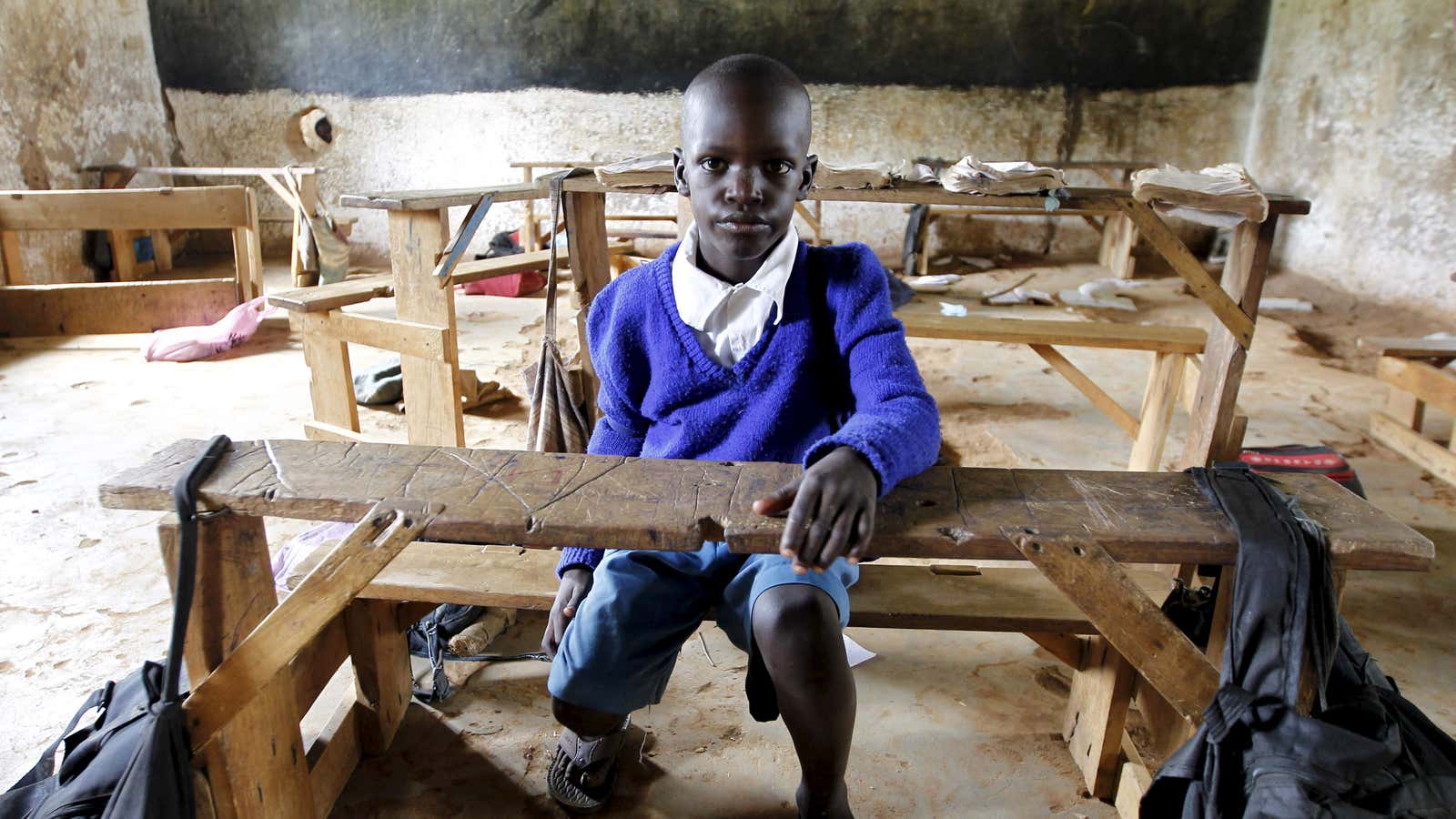Obtaining a quality education is an important development objective for many countries, and one of the principal sustainable goals for the United Nations. Yet the international funding to support education has been “stagnant” since 2010, a new report from UNESCO says.
The Global Education Monitoring Report notes that donor countries are placing a lower priority on education aid, creating an annual $39 billion financing gap between 2015 and 2030. As allocations for health and humanitarian relief increased globally due to the refugee and migration crisis in Europe, aid to education stood at $12 billion in 2015, 4% below the 2010 levels.
This shortfall is specifically affecting countries most in need—worsening the prospects for achieving global education goals. The situation is especially critical in sub-Saharan Africa, where the countries most in need are located, and which also has over half of the world’s out-of-school children.
Students in countries like Burundi, Central African Republic, and Ethiopia continue to face challenges accessing equitable and quality education. The situation is so acute that these low-income countries are not expected to attain universal primary education until 2100—over 100 years after high-income nations. And even though sub-Saharan Africa received the largest share of education aid globally in 2015—$1.3 billion or 26% in total—UNESCO says that figure represented almost half its share in 2002.
The decline in funding was precipitated by budget cuts from some of the traditional donor countries and agencies. The United States and the United Kingdom, the two leading contributors, both cut their aid to basic education by 11% and 9% respectively. The World Bank, which is the largest funding partner of education, increased its budget but was still at levels similar to those of 2008. However, other non-traditional bilateral donors like the United Arab Emirates have emerged since 2013, contributing an average of $227 million per year.
Financing is a critical issue facing African education. While governments have increased spending on education, the continent still faces significant funding gaps. Corruption also hampers the development of the sector, with government officials like those in Kenya missing tens of millions of dollars from ministry budgets.
Fixing education in Africa could help reduce maternal deaths by 70% in sub Saharan Africa if women finished primary school, and almost 60% fewer girls would become pregnant under 17 if they finish secondary education, according to UNESCO.
